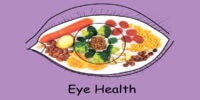Why Eye Injuries Should Be Treated Promptly

Eye injuries are a significant health concern that necessitates prompt medical attention. Prompt treatment is crucial due to the potential risks and complications associated with such injuries.
This article aims to address the importance of immediate medical attention for eye injuries, common causes of eye injuries, recognizing the signs and symptoms, potential complications of delayed treatment, treatment options, and preventive measures.
By providing a comprehensive understanding of the topic, this article seeks to underscore the necessity of timely treatment for eye injuries.
Key Takeaways
- Prompt treatment is crucial for eye injuries to prevent complications and ensure proper healing.
- Eye injuries can lead to permanent vision loss, infection, or even loss of the eye itself without proper treatment.
- Immediate medical evaluation and treatment can help prevent these complications and improve the chances of a successful recovery.
- Prioritizing eye safety and seeking immediate medical attention in case of an eye injury mitigates potential long-term consequences and ensures optimal healing.
The Importance of Immediate Medical Attention for Eye Injuries
Immediate medical attention is crucial for eye injuries to prevent complications and ensure proper healing. Eye injuries can have potential long-term consequences if not treated promptly. The importance of seeking immediate medical attention cannot be overstated. Without proper treatment, eye injuries can lead to permanent vision loss, infection, or even loss of the eye itself. Prompt medical evaluation and treatment can help prevent these complications and improve the chances of a successful recovery.
Additionally, the use of protective eyewear is of utmost importance in preventing eye injuries. Wearing appropriate eyewear, such as safety goggles or face shields, can significantly reduce the risk of eye injuries in various settings, such as construction sites, laboratories, or sports activities. It is essential to prioritize eye safety and seek medical attention immediately in the case of an eye injury to mitigate potential long-term consequences and ensure optimal healing.
Common Causes of Eye Injuries and Potential Risks
This discussion will focus on three key points related to workplace hazards, sports-related injuries, and household accidents.
Firstly, we will explore the dangers associated with workplace hazards and discuss strategies for their prevention.
Secondly, we will examine the importance of injury prevention and protection in sports-related activities.
Lastly, we will discuss the significance of household accident prevention and the importance of first-aid knowledge in dealing with such incidents.
Workplace Hazards: Dangers, Prevention
One significant aspect of workplace hazards is the potential danger they pose to individuals and the importance of implementing preventive measures.
Workplace safety is of utmost importance in order to minimize the risks associated with hazardous conditions. Safety equipment plays a crucial role in ensuring the well-being of employees and preventing workplace injuries.
Effective safety equipment such as protective goggles, helmets, gloves, and safety shoes can provide a physical barrier against potential hazards. These protective measures not only safeguard workers’ health and safety but also contribute to increased productivity and reduced absenteeism.
Furthermore, employers have a legal and ethical responsibility to provide a safe working environment and ensure the availability and proper use of safety equipment.
Sports-Related Injuries: Prevention, Protection
Sports-related injuries can be prevented and mitigated through the use of appropriate protective gear and adherence to safety guidelines.
Eye injuries are particularly common in sports and can have serious consequences if not treated promptly. Preventing eye injuries should be a top priority for athletes and sports organizations.
The use of protective equipment such as goggles or face shields can greatly reduce the risk of eye injuries. These protective measures should be mandatory in sports where eye injuries are prevalent, such as basketball or racquet sports.
Additionally, athletes should be educated about the importance of eye safety and encouraged to report any eye injuries immediately. Prompt treatment can help prevent further damage and minimize the long-term effects of the injury.
Household Accidents: Prevention, First-Aid
Household accidents can be prevented and the severity of injuries can be minimized through implementing safety measures and providing appropriate first-aid. To prevent accidents in the household, it is important to:
- Keep the floors clean and dry to avoid slips and falls.
- Install safety gates and window guards to prevent children from accessing hazardous areas.
- Use safety latches on cabinets and drawers to prevent accidental ingestion of harmful substances.
- Ensure that electrical outlets are childproofed to prevent electrical shocks.
- Store sharp objects, such as knives and scissors, in secure and designated places.
In case of an emergency, prompt and effective emergency response is crucial. This includes:
- Keeping a well-stocked first-aid kit readily available.
- Knowing the location and proper use of emergency exits and fire extinguishers.
- Educating all household members about basic first-aid procedures and emergency contact numbers.
- Regularly checking and maintaining the functionality of smoke detectors and fire alarms.
- Seeking immediate medical attention for serious injuries or accidents that require professional intervention.
Recognizing the Signs and Symptoms of Eye Injuries
Redness and swelling are common indicators of eye injuries and can provide valuable information about the severity and type of injury. These signs occur due to the body’s immune response to the injury, leading to inflammation and increased blood flow to the affected area.
Additionally, vision changes after an eye injury can be a significant symptom to watch for, as they can range from mild blurriness to complete loss of vision and may indicate damage to the eye structures or nerves.
Redness and Swelling Indicators
Inflammation and puffiness are commonly observed indicators that prompt attention should be given to eye injuries in order to avoid potential complications. Redness and swelling are two prominent symptoms that can occur following an eye injury. These indicators often suggest the presence of underlying damage or trauma to the eye, and it is essential to promptly address them to prevent further harm.
Treatment for redness and swelling may involve various approaches, depending on the severity of the injury. This can include applying cold compresses to reduce inflammation, using over-the-counter eye drops to alleviate discomfort, or seeking medical intervention if the symptoms persist or worsen.
Timely recognition and appropriate management of these signs are crucial for ensuring optimal recovery and preventing long-term complications.
- Cold compresses can help reduce inflammation
- Over-the-counter eye drops can alleviate discomfort
- Seeking medical intervention may be necessary for persistent or worsening symptoms
- Prompt recognition of redness and swelling is important for early intervention
- Proper management of these indicators can prevent long-term complications.
Vision Changes After Injury
Vision changes after an injury can serve as a significant indication of underlying damage or trauma to the eye, necessitating timely attention and appropriate management to prevent potential complications.
These changes can manifest in various ways, including blurred vision, decreased visual acuity, double vision, or even complete loss of vision. The severity and duration of these changes depend on the extent and nature of the injury.
While some vision changes may resolve spontaneously over time, others can have long-term effects that persist even after the initial injury has healed. These long-term effects can include permanent vision loss, reduced visual field, or disturbances in color vision.
Therefore, it is crucial to promptly assess and address vision changes following an eye injury to optimize outcomes and minimize the risk of permanent visual impairment.
Potential Complications of Delayed Treatment for Eye Injuries
Consequences of delayed treatment for eye injuries may include corneal scarring, increased risk of infection, and long-term visual impairment. Prompt intervention is crucial to prevent potential long-term consequences.
The importance of early intervention lies in minimizing the risk of corneal scarring, which can lead to permanent visual impairment. Additionally, immediate treatment can effectively reduce the risk of infection, which can potentially result in severe complications such as endophthalmitis or even loss of the eye.
Early intervention also allows for timely assessment and management of other ocular structures, such as the lens and retina, preventing secondary complications. Furthermore, prompt treatment facilitates better healing and recovery, minimizing the overall impact on visual function and quality of life.
Therefore, it is imperative that eye injuries receive immediate attention and appropriate medical intervention.
- Minimize risk of corneal scarring
- Reduce risk of infection
- Prevent secondary complications
- Improve healing and recovery
- Maintain visual function and quality of life
Treatment Options for Various Types of Eye Injuries
Treatment options for various types of eye injuries depend on the specific injury, and may include medications, surgical interventions, and supportive therapies. The choice of treatment is determined by factors such as the severity and location of the injury, as well as the overall health of the patient.
For minor eye injuries, over-the-counter lubricating eye drops or ointments may be sufficient to relieve discomfort and promote healing. In more severe cases, prescription medications such as antibiotics or corticosteroids may be prescribed to prevent infection or reduce inflammation.
Surgical interventions, such as repairing a detached retina or removing a foreign object, may be necessary for certain types of injuries. Additionally, supportive therapies such as wearing an eye patch, applying cold compresses, or practicing good eye hygiene can aid in the recovery process.
It is important to consult with a healthcare professional to determine the most appropriate treatment option for each individual case.
Preventive Measures to Minimize the Risk of Eye Injuries
Preventive measures aimed at minimizing the risk of ocular trauma involve implementing safety protocols, utilizing protective eyewear, and ensuring a hazard-free environment. These measures are crucial in preventing eye injuries, as they can have significant consequences on visual acuity and overall eye health.
To effectively reduce the risk of eye injuries, the following safety precautions should be implemented:
- Regularly conducting risk assessments to identify potential hazards in the environment.
- Providing training and education on proper safety procedures and the use of protective eyewear.
- Implementing engineering controls, such as installing safety guards and barriers, to minimize the risk of eye injuries.
- Enforcing strict adherence to safety protocols and regulations in workplaces and recreational settings.
- Regular maintenance and inspection of protective eyewear to ensure its effectiveness.
Frequently Asked Questions
How Much Does Immediate Medical Attention for Eye Injuries Cost?
The cost of emergency treatment for eye injuries depends on various factors such as the severity of the injury, the type of treatment required, and the healthcare system in place. Early intervention is important to prevent complications and reduce overall treatment costs.
Does Insurance Cover the Cost of Immediate Medical Attention for Eye Injuries?
The extent of insurance coverage for immediate medical attention for eye injuries is contingent upon the specific policies and terms of the insurance provider. Seeking timely treatment is crucial to mitigate potential complications and preserve visual function.
Are Certain Age Groups More Prone to Eye Injuries Than Others?
The prevalence of eye injuries varies across age groups, with certain age groups being more prone to such injuries. Factors such as participation in sports and exposure to occupational hazards contribute to the increased risk.
Can Eye Injuries Result in Permanent Vision Loss?
Eye injuries can result in permanent vision loss, which can have significant long-term consequences. Therefore, it is crucial to treat eye injuries promptly to minimize the risk of irreversible damage. Implementing appropriate prevention measures can also help mitigate the occurrence of such injuries.
Are There Any Alternative Treatments for Eye Injuries Besides Medical Attention?
Alternative treatments for eye injuries, apart from medical attention, are limited. While some individuals may attempt home remedies such as applying cold compresses or eye drops, these methods have not been proven to be as effective as professional medical treatment.








